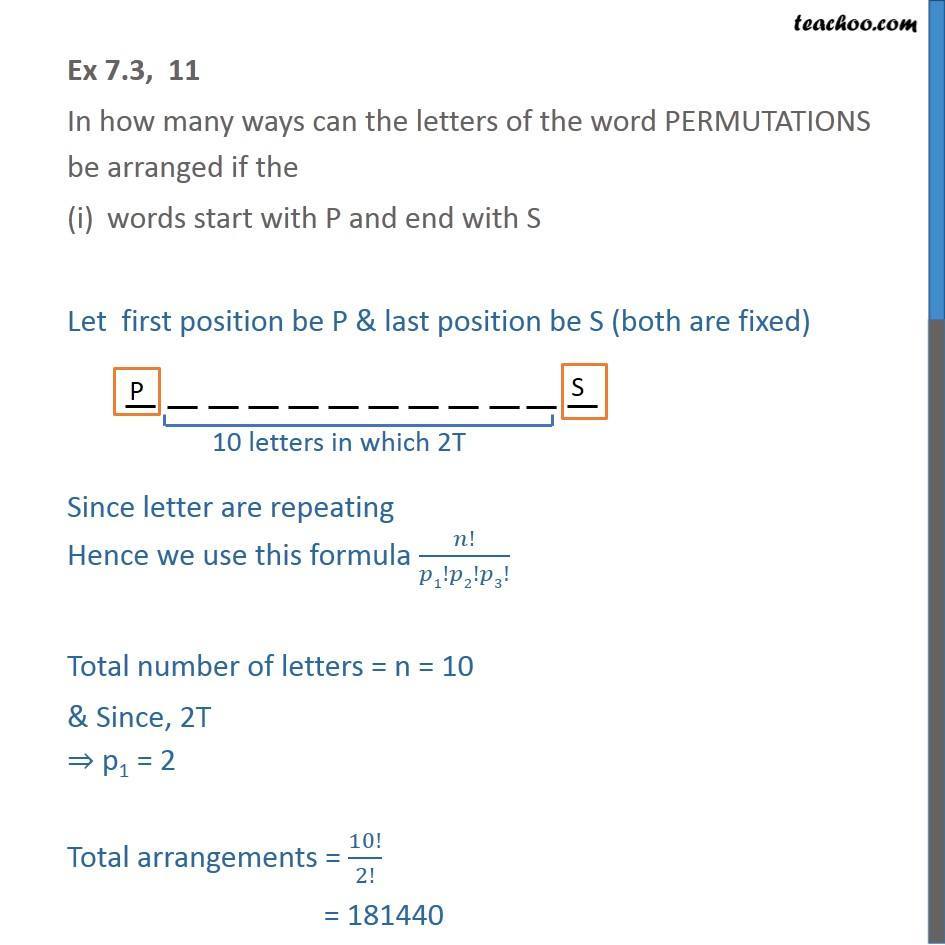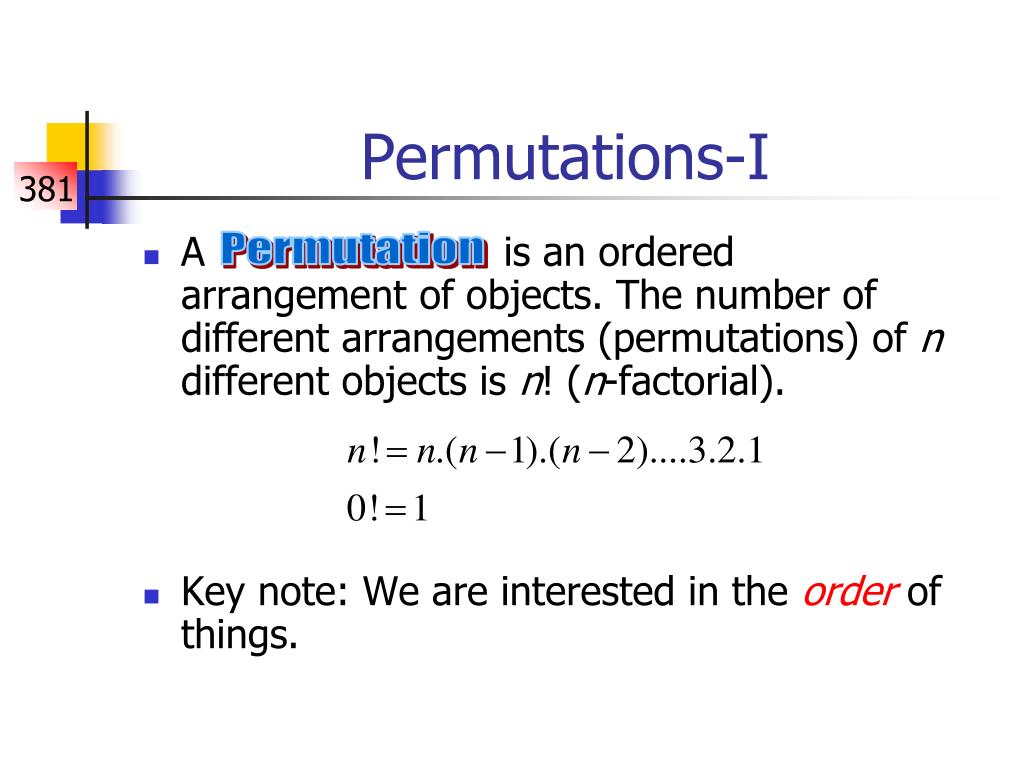

But you might say, hey, when we just did five different people inįive different chairs, and we cared which seat they sit in, we had this five factorial. I like to actually conceptualize and visualize what I'm doing. I just literally draw it out because I don't like formulas.

Now this, and my brain, whenever I start to think in terms of permutations, I actually think in these ways. So there's 60 permutations of sitting five people in three chairs. So this is equal to five times four times three scenarios, which is equal to, this is equal to 60. We haven't seaten or sat three of the people yet, so for each of theseĢ0, we could put three different people in seat three, so that gives us five timesįour times three scenarios. For each of those 20 scenarios, how many people could sit in seat three? Well, we haven't sat, So we have five times four scenarios where we've seated seats one and seat two. Who haven't been seated, so four people could sit in seat two. If one person has sat down, there's four people left Scenarios where one person has already sat in seat one, how many people could sit in seat two? In each of these scenarios, If we seat them in order,Īnd we might as well, how many different people, if we haven't sat anyone yet, how many different peopleĬould sit in seat one? Well, we could have, if no one sat down, we had five different people, five different people I am assuming you have had your go at it. How many ways can you have five people, where only three of themĪre going to sit down in these three chairs, and we care which chair they sit in? I encourage you to pause the We have chair one, we have chair two, and we have chair three. Let's say that we only have three chairs. Have these five people, but we don't have as many chairs, so not everyone is going Maybe more interesting, or maybe you might find Five factorial, which isĮqual to five times four times three times two times one, which, of course, is equal to, let's see, 20 times six, which is equal to 120. The number of permutations, permutations, of seating these five We only have one person who hasn't sat down left, For each of those, how many possibilities are there for the fifth seat? Well, one. So now there's five times four times three times two scenarios of How many people are left for seat four? Well, two people haven't sat down yet, so there's two possibilities. So now, there's five timesįour times three scenarios for seating the first three people. Now seat in seat three for each of those 20 scenarios? Well, three people haven't sat down yet, so there's three possibilities there. Five times four, we have 20 scenarios where we've seated seat one and seat two, how many people could we Now, for each of these scenarios, now, so we have 20 scenarios. So, for each of those scenarios, four different peopleĬould sit in chair two. If we seated people in order, which we might as well do, we could say, look, five different people could sit in chair one. People in these five chairs, we could say, well, we The number of scenarios, or we could say the number of permutations of putting these five

Two, position three, position four, and position five. Them in five different, let's say, positions, or chairs, so position one, position The number of combinations of n objects taken r at a time is determined by the following formula:įour friends are going to sit around a table with 6 chairs.If we had five people, let's say person A, person B, person C, person D, and person E, and we wanted to put In our example the order of the digits were important, if the order didn't matter we would have what is the definition of a combination.

In order to determine the correct number of permutations we simply plug in our values into our formula:
#Number of ways to permute a word code
How many different permutations are there if one digit may only be used once?Ī four digit code could be anything between 0000 to 9999, hence there are 10,000 combinations if every digit could be used more than one time but since we are told in the question that one digit only may be used once it limits our number of combinations. The number of permutations of n objects taken r at a time is determined by the following formula:Ī code have 4 digits in a specific order, the digits are between 0-9. One could say that a permutation is an ordered combination. If the order doesn't matter then we have a combination, if the order does matter then we have a permutation. It doesn't matter in what order we add our ingredients but if we have a combination to our padlock that is 4-5-6 then the order is extremely important. A Waldorf salad is a mix of among other things celeriac, walnuts and lettuce. Before we discuss permutations we are going to have a look at what the words combination means and permutation.


 0 kommentar(er)
0 kommentar(er)
